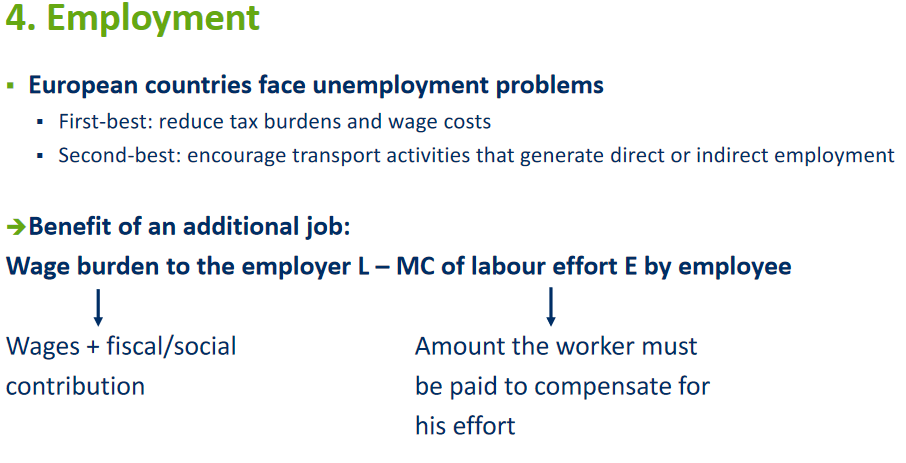A section in my (mostly conventional) transport economics (Blauwens, De Baere, Van de Voorde, 2002) handbook discusses the use of transport policy to generate employment (as a second-best solution: https://en.wikipedia.org/wiki/Theory_of_the_second_best). In that sense it refers to benefit of an additional job, which is partly determined something called "the marginal cost of the work performed", also "MC of (labour) effort", on which it's unclear about what exactly it constitutes. Let me first show you the adjoining slides, so you have a sense where it fits in:
As you can see E doesn't seem to simply stand for wages, because that's what L already stands for. It also doesn't seem to be the case that L-E stands for employment taxes and contributions, as "benefit for society" suggests something broader. What baffles me is how the book describes L. It refers to it as the total wages, so wages + fiscal/social contributions, as in the slides, but it also says that L "expresses the value of the products created through labour". L-E is referred to as "the difference between the value of the goods produced and the cost of the worker's effort.". It think this is very curious, as if it's saying that the value of goods is that of its incorporated labor (ie the labor theory of value). That'd imply L-E stands for Marx' surplus value and E is the cost of the workers' subsistence. Or is my understanding mistaken and is "MC of the work performed" actually a legitimate concept, perhaps from labor economics?

